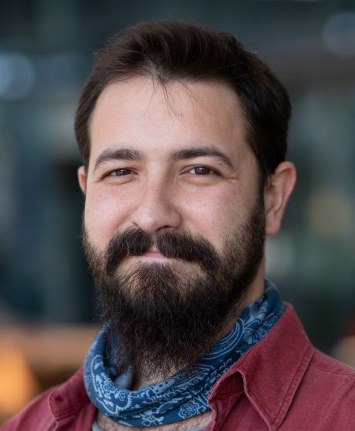
MSc
Yiğitcan SÜMBELLI
Eindhoven University of Technology Biomedical EngineeringBiography
Yiğitcan Sümbelli (İstanbul, 1990) received his MSc in Biochemistry from Anadolu University, Turkey, in 2019. He developed a conductive natural biomaterial ink combination that can be used for 3D bioprinting neural conduits to help and/or induce neural regeneration. The research was conducted under the supervision of Prof. Dr. Sibel Emir Diltemiz and Prof. Dr. Arzu Ersöz. During a research stay at VU University Medical Center in Amsterdam, the Netherlands, in 2018, he studied the effect of decellularized extracellular matrix addition on tissue regeneration with a 3D bioprinter under the supervision of Dr. Dafydd O. Visscher, MD in Prof. Dr. Paul van Zuijlen, MD’s group. In 2021, he conducted another research stay at the Max Planck Institute for Medical Research in Heidelberg, Germany, and he studied the bottom-up assembly of synthetic cells for various 3D printing applications in Dr. Kerstin Göpfrich’s group. As of February 2022, he joined the Bio-organic chemistry research group as a PhD candidate.
Expertise
Yiğitcan’s current research is mainly shaped around the topics of 3D bioprinting of artificial cells for artificial cell-mediated tissue engineering. Traditional tissue engineering applications generally focus on combining different materials to control cellular behavior and using various techniques (e.g., 3D bioprinting, in situ tissue engineering) to allow controlled tissue formation within a scaffold. However, our advanced understanding of the fundamentals of cellular organization, tissue development, and regeneration has led the field to achieve a higher spatiotemporal control on cell-matrix interactions, which is required for the next step in tissue engineering. For this purpose, the primary goal of Yiğitcan’s research is to use artificial cells that carry differentiation-inducing cues and/or regeneration-supporting agents along with native cells within tissue-engineered scaffolds. Coacervate-based artificial cells are being developed and used as embedded in biomaterial and/or synthetic inks for the controlled deposition of the cells by using various 3D printing techniques to engineer tissue mimics. Within this context, 3D printed organelle-containing artificial cells and 3D engineering tissue blocks with communication properties are being studied to create hybrid and/or artificial tissue networks with regeneration capabilities.
Publication(s)
https://orcid.org/0000-0002-5917-9581
https://scholar.google.com/citations?user=yJpKIsoAAAAJ&hl=en
